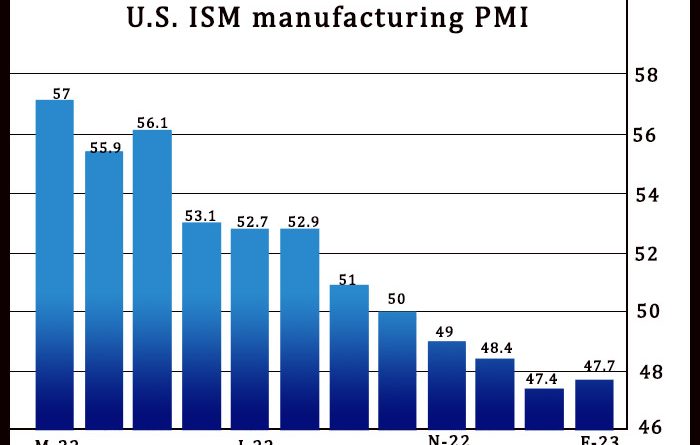U.S. Manufacturing Index Indicates Slightly Slower Contraction In February
A report released by the Institute for Supply Management on Wednesday showed U.S. manufacturing activity contracted at a slightly slower rate in the month of February.
The ISM said its manufacturing PMI inched up to 47.7 in February from 47.4 in January, although a reading below 50 still indicates a contraction. Economists had expected the index to edge up to 48.0.
The uptick by the headline index partly reflected an increase by the new orders index, which climbed to 47.0 in February from 42.5 in January.
“New order rates remain sluggish due to buyer and supplier disagreements regarding price levels and delivery lead times; the index increase suggests progress in February,” said Timothy R. Fiore, Chair of the ISM Manufacturing Business Survey Committee.
Meanwhile, the report showed the production index slipped to 47.3 in February from 48.0 in January, suggesting a slightly faster rate of contraction.
The employment index also fell to 49.1 in February from 50.6 in January, indicating employment contracted after weak expansion in the previous two months.
“Panelists’ companies continue to indicate that they will not substantially reduce head counts, as sentiment is positive about the second half of the year, though slightly less so compared to January,” said Fiore.
On the inflation front, the prices index jumped to 51.3 in February from 44.5 in January, indicating raw materials prices increased after decreasing for four consecutive months.
“Overall, there is little sign that the recent improvements in manufacturing activity in other economies, particularly China, is being reflected in the U.S.,” said Andrew Hunter, Deputy Chief U.S. Economist at Capital Economics. “The ISM index is also still loosely consistent, on past form, with negative GDP growth.”
The ISM is scheduled to release a separate report on U.S. service sector activity in the month of February on Friday. The services PMI is expected to edge down to 54.5 in February from 55.2 in January.
Source: Read Full Article

